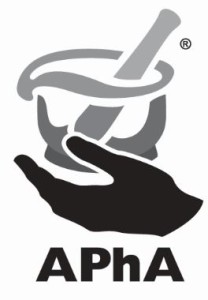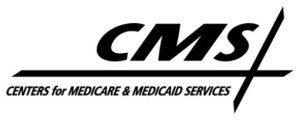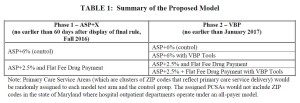- FDA moves to increase competition among single-source generics (drugstorenews.com)
Based on the latest update to the Center for Drug Evaluation and Research’s Manual of Policies and Procedures, the Food and Drug Administration is looking to create more competition among generics — particularly for generics made by a single manufacturer... The updated MAPP outlines situations in which abbreviated new drug applications submitted by generics manufacturers will be eligible for an expedited review process, including submissions related to drug shortages, and legal requirements. Among them is the potential for expedited review for ANDAs related to what the agency calls "sole-source drugs" — drugs whose generic is manufactured by a single company...Submissions for drug products for which there is only approved product listed in the Prescription Drug Product List…of FDA’s Approved Drug Products with Therapeutic Equivalence Evaluations...and for which there are no blocking patents or exclusivities may receive expedited review...
- Swiss and Indian regulators trying to determine how fake Harvoni reached Israel (in-pharmatechnologist.com)
The Swiss importer that supplied fake Harvoni to Israel has named the Indian manufacturer from which it bought the drug and is cooperating with an investigation say regulators...The knockoff versions of Gilead's $1,350-a-pill hepatitis C drug seized by Israeli authorities were supplied by a Swiss trading firm, which sourced them from a manufacturer in India according to...Swissmedic...Under the Swiss Federal Act on Medicinal Products and Medical Devices, Swissmedic can neither name the Swiss trader nor contact any other customers to which it may have supplied Harvoni until the investigation is completed...Similar investigations have taken up to two years...Gilead licensed rights to manufacture and distribute pills...Harvoni...to...Indian companies Cadila Healthcare, Cipla, Hetero Labs, Ranbaxy Laboratories, Sequent Scientific and Strides Arcolab...
- The End of Prescriptions as We Know Them in New York (nytimes.com)
Starting on March 27, the way prescriptions are written in New York State will change. Gone will be doctors’ prescription pads and famously bad handwriting. In their place: pointing and clicking, as prescriptions are created electronically and zapped straight to pharmacies in all but the most exceptional circumstances...New York is the first state to require that all prescriptions be created electronically and to back up that mandate with penalties, including fines and imprisonment, for physicians who fail to comply. Minnesota has a law requiring electronic prescribing but does not penalize doctors who cling to pen and paper...Just as doctors putting away their pads will face a culture change in New York, so, too, will patients, who will no longer be able to shop around for the shortest waiting time or the best price for their medications...“It’s probably driven us to prescribe more standardized regimens and more standardized dosing,” said Dr. Paul A. Testa, the chief medical information officer at NYU Langone. “And the reality is, there is always the phone. If I have a doubt, I can call the pharmacy.”
- US FDA backlog holding up revamp of inactive ingredients database (in-pharmatechnologist.com)
The process of sorting out problems with the US FDA's controversial Inactive Ingredients Database is shaping up to be a huge task, particularly as the agency is working through a backlog of missing updates extending back several years...The IID is a listing of inactive ingredients found in FDA-approved drug products, and is meant to be updated in a consistent manner as new medicines and their excipients are given the go-ahead by the regulator...it emerged recently that - from around 2005 - FDA resource constraints meant that the IID was not being updated at all with new excipient listings, and was left in hiatus for around a decade...If the database is not reliable, the review times for new medicines can be extended and may lead to applications being refused, according to excipient trade body IPEC-Americas...The agency is now working hard to work through the backlog of applications...There are still major concerns about the quality of the data in the IID...the IID has become peppered with inaccurate information that has compromised its integrity, including inaccurate ingredient names and potencies and ingredients listed as a percentage with no indication of basis units...Overall, the FDA says it is aiming to transform the IID into a complete, fully-searchable database that will link into other databases on nomenclature, toxicology etc and accommodate electronic submissions, to eliminate data entry errors and potentially allow it to be updated in real time...
- ICD-10 to get 5,500 new codes, including ones for face, hand transplants, CMS says (healthcareitnews.com)
CMS said it plans to add about 1,900 diagnosis codes and 3,651 hospital inpatient procedure codes to the coding system…On Oct. 1, the Centers for Medicare and Medicaid Services will add another 5,500 codes to the ICD-10 diagnostic library, officials announced…The addition will come exactly one year after ICD-10, with its nearly 70,000 billable codes, replaced the dated, and much more compact, ICD-9 code set… The new and revised ICD-10-CM (Clinical Modification) and ICD-10 PCS (Procedure Coding System) codes will be included in the hospital inpatient prospective payment system proposed rule for fiscal 2017…
- 3 Legislative and Regulatory Updates Pertinent to Pharmacists (pharmacytimes.com)
...at APhA’s 2016 Annual Meeting & Exposition...they discussed...the proposed nondiscrimination rule, pending pharmacist provider status legislation, and draft guidance on prescription drug abuse...
- Proposed Nondiscrimination Rule - Under this proposed rule, pharmacies would be required to offer language assistance services to patients with limited English, unless the pharmacy would face "undue financial burden," or if doing so would "result in a fundamental alternation in an entity’s health program or entity,"...also applies to the requirement that pharmacies provide auxiliary aids and services and the accessibility of programs through electronic and information technology...HHS does not expect compliance with the proposed rule to cost too much, and training employees on these new requirements is voluntary.
- Pharmacist Provider Status Legislation - legislation would allow pharmacists to be reimbursed for their services as long as the pharmacist serves in medically underserved areas, health professional shortage areas, or for medically underserved populations and follows the state’s scope of practice laws...there has been no opposition to the proposed legislation...cost will be a challenge...The next steps are getting a Congressional Budget Office score, meaning a cost estimate for the bill...they hope to see a score within a few weeks, and then a few weeks later, they can expect a House hearing.
- Draft Guidance on Prescription Drug Abuse - the Centers for Disease Control and Prevention issued draft guidance for prescribing opioids for chronic pain, which were fairly controversial...APhA’s comments on the guidelines included the fact that a team-based approach to care including pharmacists was needed. In addition, the guidelines should mention that the lowest-effective dose should be patient-specific, and more education is needed for health care professionals.
- Medicaid Pharmacy Reimbursement Changes Coming Soon (ashp.org)
Centers for Medicare and Medicaid Services late this month plans to publish a long-awaited official revision to the maximum allowable reimbursement amount for multiple-source outpatient drugs covered by state Medicaid programs...The revised amounts, known as federal upper limits, will become effective April 1 to coincide with provisions in the Covered Outpatient Drugs final rule...FULs were most recently updated in September of 2009...Starting in April, the agency plans to update the FULs monthly. State Medicaid plans will have up to 30 days to implement each set of new FULs...state Medicaid plans have flexibility to implement the new reimbursement model, as long as the state's plan is based on pharmacies' true drug acquisition costs...states have flexibility in setting their professional dispensing fees, including whether to use state or national data to calculate rates...CMS expects state Medicaid plans to provide "credible data" that demonstrates how their reimbursement plan accurately accounts for dispensing costs...States must consider the totality of reimbursement to pharmacies when they are looking at changes in either the ingredient cost or professional dispensing fee...State Medicaid agencies have until June 30, 2017, to submit their amended plans to CMS. The revised plans must go into effect by April 1, 2017.
- Why CMS’s Crazy Plan to Remake Medicare Part B Won’t Work (drugchannels.net) Community Oncology Alliance’s letter to Secretary Burwell, HHS (blog2.communityoncology.org)Health-Care Providers Aim to Fight Medicare Drug Plan (wsj.com)
In an amazing display of bureaucratic hubris, the Centers for Medicare & Medicaid Services has proposed a mandatory, real-world experiment with provider reimbursement under the Medicare Part B program…CMS wants to reduce reimbursement for buy-and-bill drugs—but for only half of the country's providers. The other half will retain current reimbursement levels. After five years, CMS will see what happened…the proposal so overreaches that it will face enormous opposition and has little chance of being implemented…CMS’s proposed…Payment Model and the glaring methodological flaw that could end up raising drug costs…CMS wants to go after the buy-and-bill system’s theoretically…incentive for physicians to prescribe more-expensive drugs. For pricey specialty drugs, even a low single-digit markup over ASP can generate substantial dollar profits for a provider…These practices are for-profit private businesses. They will surely attempt to optimize against the CMS Phase I proposal by, for example, strategically directing patients to certain locations based on the cost of therapy and expected reimbursement…CMS even claims that its Phase I proposed model is “budget neutral.” This conclusion is based on the false assumption that there will be no behavior change in response to the study…CMS also ignores the possibility that patients will be shifted to higher-cost sites of care, including hospital outpatient departments…We are already seeing similarly brutal opposition to CMS’s latest brainstorm.
- Indian court grants temporary relief to Abbott, Glenmark in drug ban case (reuters.com)
An Indian court on Tuesday granted interim injunction to U.S. drugmaker Abbott's India unit, and domestic companies Glenmark Pharmaceuticals and Macleods Pharmaceuticals, on the prohibition on sale of several combination drugs...India banned 344 drug combinations over the weekend, including Abbott's codeine-based cough syrup, after a government panel of experts found they had "no therapeutic justification"...The judge in the Delhi High court granted an interim stay to the pharmaceutical companies and said regulators should take "no coercive steps" against them. The case will now be heard on March 21.
- FDA Settles With Drugmaker in Fish-Oil Drug Marketing Case (abcnews.go.com)FDA deal with Amarin is unlikely to spark more off-label promotion (statnews.com)
The maker of a prescription fish-oil drug says it has reached a legal settlement that will allow it to promote unapproved uses of its drug for lowering fat levels...The closely watched case between Amarin and the Food and Drug Administration could strengthen the drug industry's hand in the ongoing debate over promoting drugs for uses that have not been declared safe and effective by regulators...FDA said...the settlement is "specific to this particular case and situation," and did not mark a new legal precedent...pharmaceutical experts said companies would likely pursue more aggressive legal action against FDA, in light of the settlement...We would expect companies throughout the country to ask courts to provide the same legal reasoning...Amarin won a surprise victory over the FDA when a U.S. District Court judge ruled that the company had a First Amendment right to distribute journal articles about unapproved indications for Vascepa (icosapent)...Drugmakers are not allowed to advertise drugs for "off-label" uses, or those that have not been cleared by the FDA as safe and effective. But companies' ability to distribute independent materials about their drugs — such as medical journal articles — has been subject to years of legal debate centering around the limits of "commercial speech."









